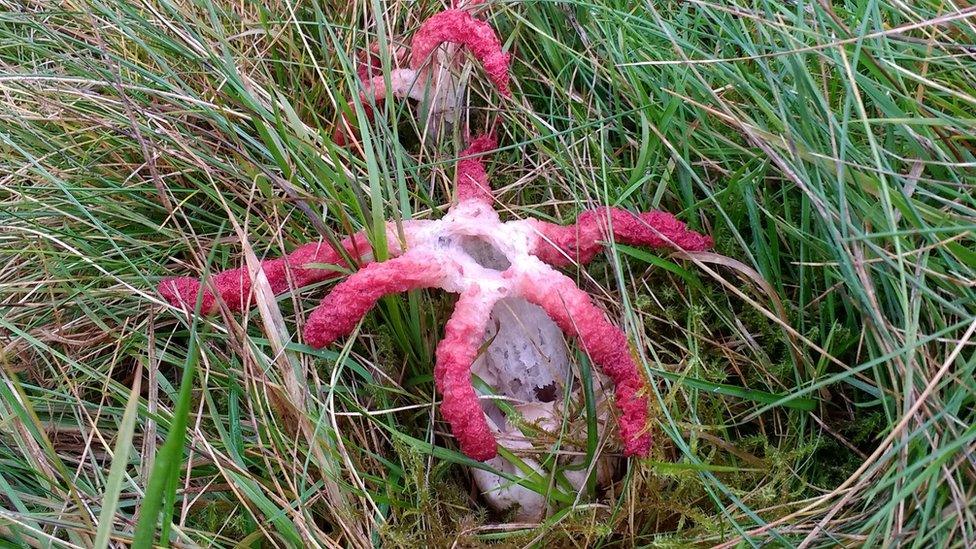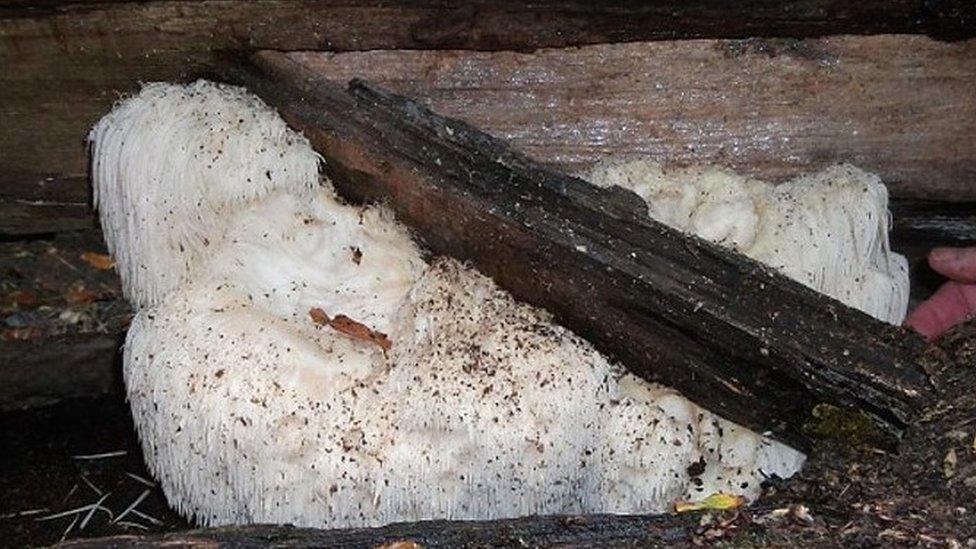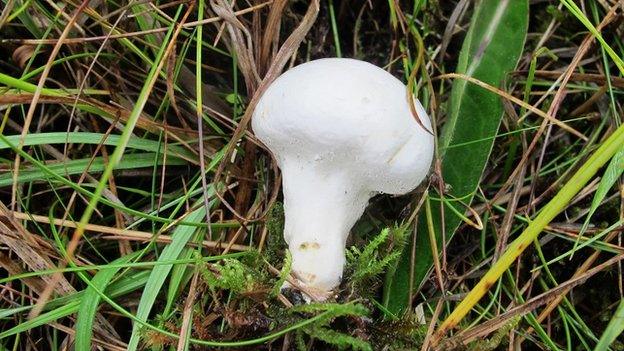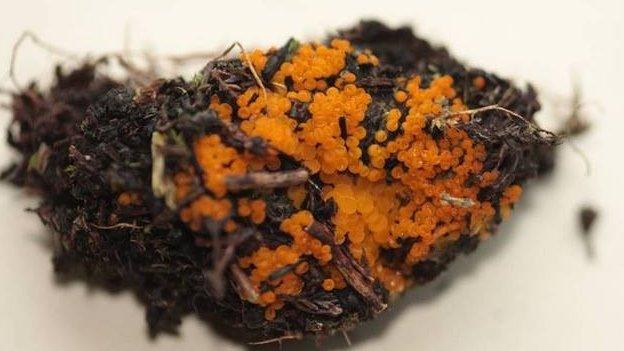Rare devil's fingers fungus found on Halloween
- Published

Avon Wildlife Trust say there are not many records of the fungus in the UK as it only crops up on well-managed land
A rare fungus known as the devil's fingers was discovered on Halloween at a nature reserve.
An Avon Wildlife Trust conservation team chanced upon it at Dolebury Warren on the Mendip Hills near Bristol.
Charlotte Targett, from the trust, said: "I didn't know what it was when I first saw it, it looked like some sort of strange sea creature."
The species is from the southern hemisphere and was first discovered in Britain in 1914.

Avon Wildlife Trust described the fungus as a "big, bold and beautiful" species
Ms Targett said her "more experienced" colleague Joe McSorley was able to identify it.
Mr McSorley said: "We were surprised to find devil's fingers fungi as it's a rare find in the UK, with only two known records from our region, both from 1999.
"Careful conservation management over the years means that Dolebury Warren is particularly rich in fungal species."
Devil's finger is also known as octopus fungus, was not discovered in Europe until 1914 and was believed to have arrived from Australia or New Zealand.
'Rotting flesh'
Dave Lamacraft from conservation charity Plantlife said it was a "fantastic rare Halloween find".
"It erupts from a partially buried 'egg' by pushing its red octopus-like arms through the egg which then unfold revealing their sticky and smelly insides," he said.
"Related to the stinkhorns, it smells of rotting flesh, which attract insects to the sticky substance on the octopus arms where the spores are found - the spores are then spread by the visiting insects."
Ms Targett said the volunteers who were working with them that day were "really astonished, and were glad they were out that day".
She said it was "exciting" to share the first record of devil's fingers fungus for Avon in this millennium and said news of their find had received hundreds of likes, comments and shares on social media.
Allow X content?
This article contains content provided by X. We ask for your permission before anything is loaded, as they may be using cookies and other technologies. You may want to read X’s cookie policy, external and privacy policy, external before accepting. To view this content choose ‘accept and continue’.
- Published23 November 2018

- Published13 October 2014

- Published2 March 2014
